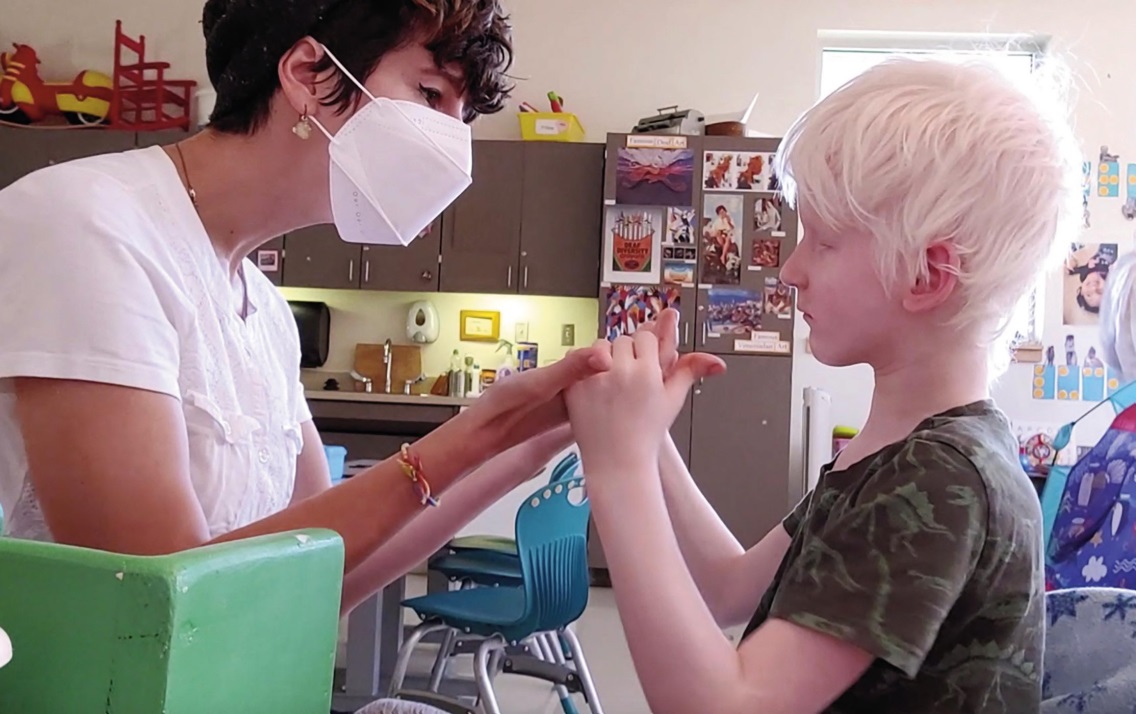BACK TO SCHOOL:
PLANNING EDUCATIONAL SUPPORTS FOR INDIVIDUALS WHO ARE DEAF-BLIND

THE RIGHT TOUCH: A teacher working with a boy who is Deafblind. An intervener works under the supervision of a certified teacher.
BY KRISTI PROBST
"The challenge was that it took us – the family and the school district – a long time to learn about deaf-blindness, and that time was lost to my son. His education was delayed… I would hope that every school district would have somebody trained and ready for when a deaf-blind child comes into their school district because it's not fair to the child to have to make them wait."
– Vivecca Hartman
One of the significant challenges facing children who are deaf-blind and their families, is locating educational personnel – teachers of the deaf-blind (TDBs) and interveners – who have training in deaf-blindness. An intervener is a paraeducator who has received specialized training in deaf-blindness. According to the Intervener Services and Interveners in Educational Settings Definition (www.nationaldb.org/media/doc/NCDB_Intervener_Services_Definition.pdf), interveners “provide access to information and communication and facilitate the development of social and emotional well-being for
children who are deaf-blind.” This includes facilitating access to the environment and helping with safety and social interactions. Educational interpreters may work alongside interveners in classrooms, but have a different role. Where an intervener provides access and may assist the student as they develop receptive and expressive language, an interpreter translates visual and spoken language into sign language and vice versa. Additionally, the interpreter is not responsible for the student’s learning whereas an intervener facilitates learning and skill development (Probst & Morrow, 2019).